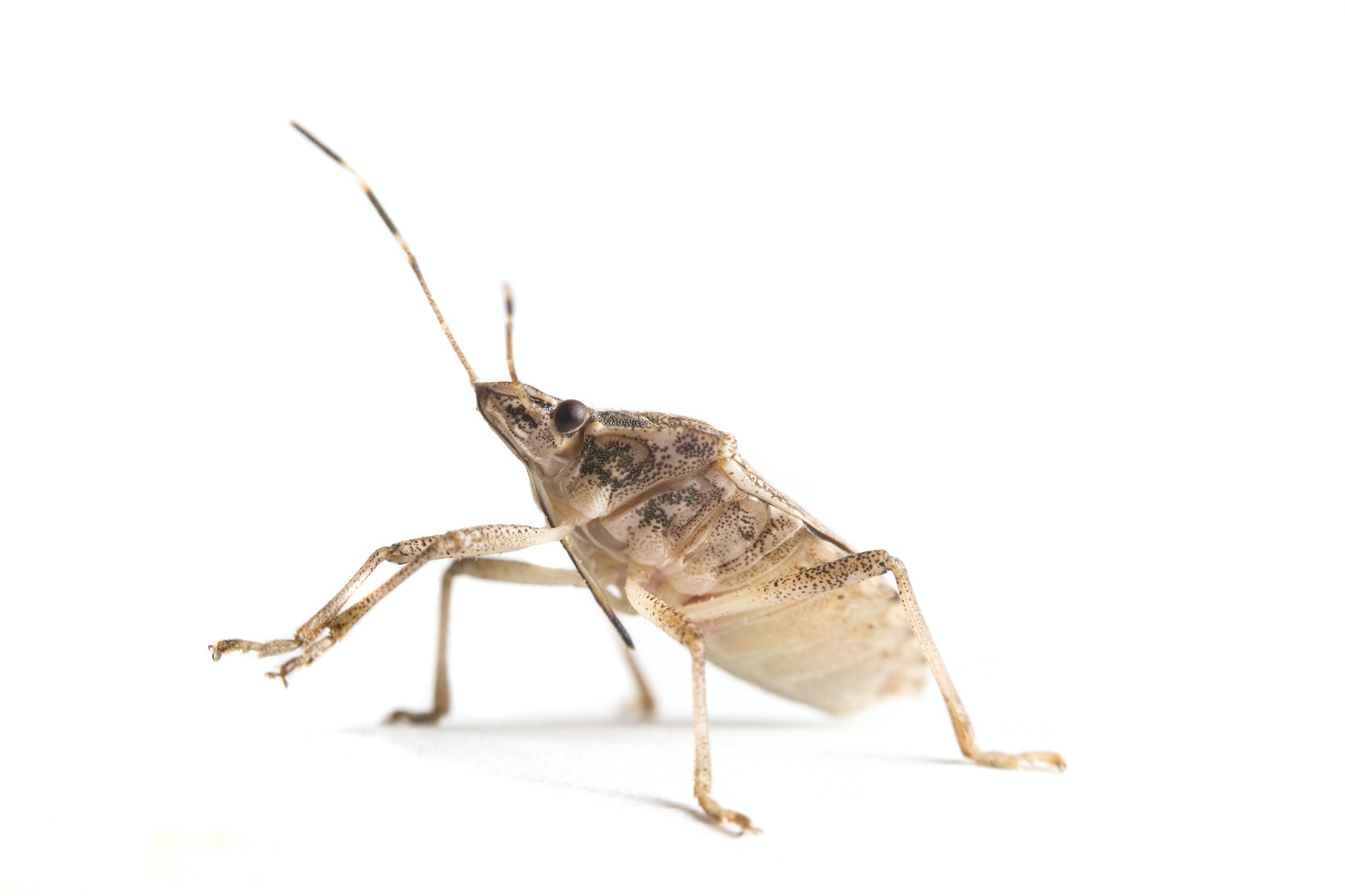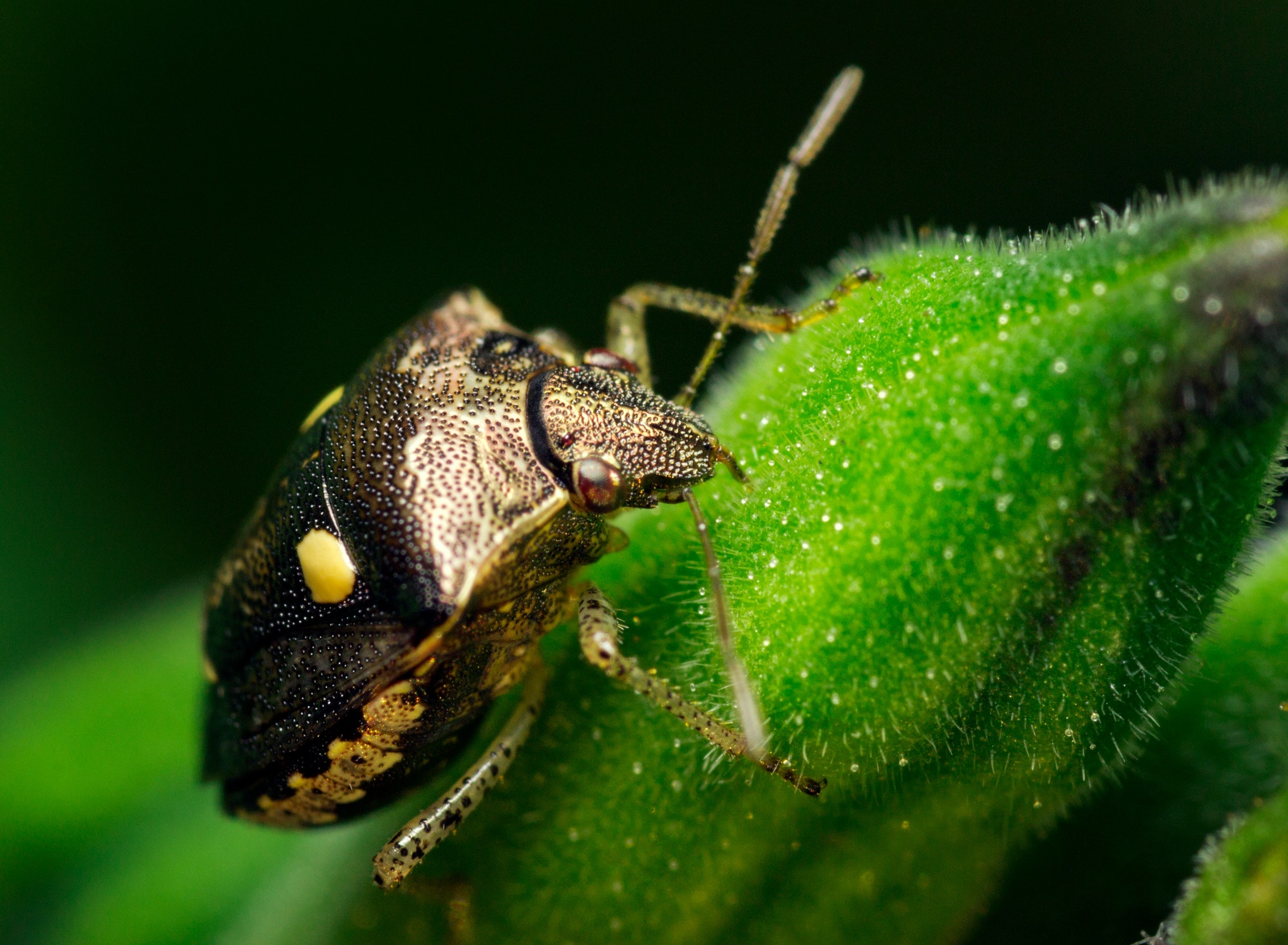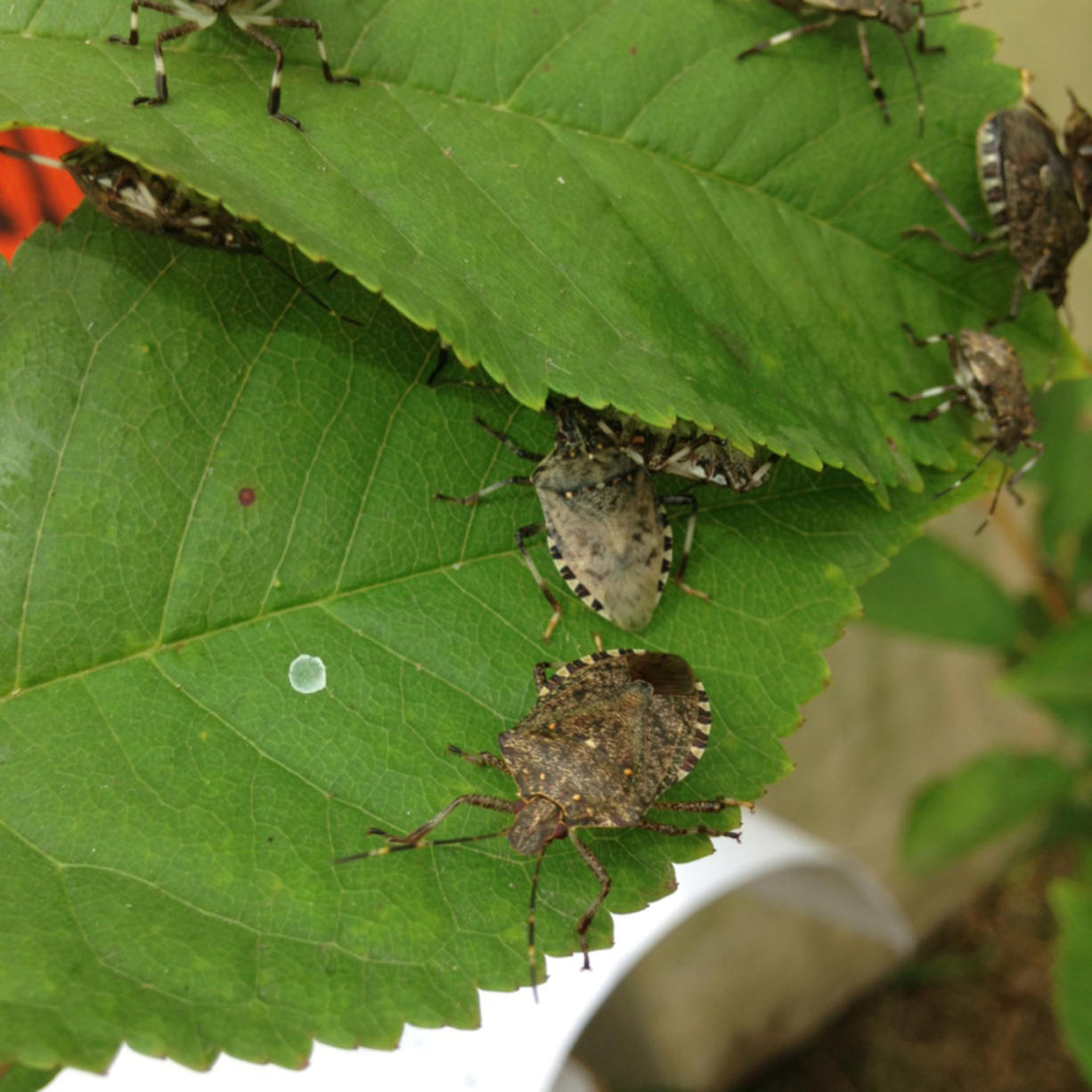Do Stink Bugs Actually Stink?
Stink bugs are insects that are large oval or shield-shaped, members of the Hemiptera order in the Pentatomidae family. They get their name from an odor of a chemical that they produce, in glands on their abdomen, thought to possibly defend against predators. Some species of stink bugs can even spray their chemical several inches!! They have ben known to take refuge in homes in the fall to escape the cold and reappear in the spring around windows, trying to get back outside.
The brown marmorated stink bug, first noted in the United States, in September of 1998 in Allentown, Pennsylvania, has no natural enemies in the United States the species has flourished. It is believed the bug was probably a stow away on a shipment of goods from China. Stink bugs eat fruit and vegetable crops and have been quite a problem for farms and orchards.

In 2006 a study was done at Clemson University on the chemical released by stink bugs using gas chromatography and mass spectrometry…. they discovered 2 of the components in the chemical stink bugs release are aldehydes trans-2-decenal and trans-2-octenal. What makes this discovery so interesting is both compounds are used to add flavor and aroma to products by the food industry! Trans-2-decenal or decenaldehyde– per the Joint FAO/WHO expert Committee on Food Additives – has a powerful waxy orange aroma.
Trans-2-octenal is described as having a nutty flavor and an odor described as waxy or like a cucumber. This is typically found in dairy or bakery items.
The smell of a stink bug will change person to person as our olfactory senses vary… but it has been compared to that of strong herbs and spices such as cilantro and coriander, so it is interesting to find compounds used by the food industry as well as a herb/spice smell!
Furthermore, a study published in the Journal of Chemical Ecology found that male stink bugs are the sole sex pheromone, produced by the same glands. This study also found stink bugs, both male and females, are hesitant to discrete their smelly chemical compound, they were more likely to try evasive techniques instead!

Another study, published in the Encyclopedia of Entomology, noted that the components of the chemical odor consist of primarily long change alkanes, aldehydes and esters. These are totally different than the chemical compounds that produce the smell emitted by the skunk, which are mostly sulfurous compounds as opposed to the esters.
This study also examined the effectiveness of their smell against predators, which researchers found to be affective. Various birds and lizards that were tested exhibited aversion to the stink bugs, not only would they spit them out if they tried them, they would also avoid any other stink bugs! The researchers in this study placed the stink bugs on their own tongue and chewed them to note the changes. They noted that the bugs caused a burning sensation and chemical taste that lasted for up to 20 minutes and localized numbness of the tongue that lasted for 1 to 2 hours! That is dedication to your research!!
To the posed question of “Do stink bugs actually stink??” my research has shown that overwhelmingly supports that they most certainly do!!








